Two behaviors indicative of pair bonds between mated pairs of Western (or Clark’s) Grebes are “Ratchet pointing” and “Dip-shaking”. The behaviors are often alternated, one after the other. I photographed both of them as they were performed by a pair of Western Grebes three days ago at Bear River Migratory Bird Refuge.
1600, f/6.3, ISO 640, Canon 7D, Canon EF500mm f/4L IS II USM +1.4 tc, not baited, set up or called in
While Ratchet-pointing the birds point their bills toward each other, raise their crests, cause their throats to bulge and produce a harsh, ratchet-like call with their heads held low. Here the two grebes are in the process of assuming that position.
1250, f/6.3, ISO 640, Canon 7D, Canon EF500mm f/4L IS II USM +1.4 tc, not baited, set up or called in
These grebes were eyeball to eyeball (or at least as close as they could get with those long, spearing bills) when the calling began. That ratchet call can be heard here.
1000, f/9, ISO 640, Canon 7D, Canon EF500mm f/4L IS II USM +1.4 tc, not baited, set up or called in
During Dip-shaking the bill and front part of the head are dipped into the water, then raised and shaken which sends water flying. Here from the water disturbance in front of the foreground bird you can see where the head and bill had been pulled out of the water and the background grebe is calling loudly as it watches the performance.
1250, f/6.3, ISO 640, Canon 7D, Canon EF500mm f/4L IS II USM +1.4 tc, not baited, set up or called in
More Dip-shaking from the same pair of birds.
1000, f/9, ISO 640, Canon 7D, Canon EF500mm f/4L IS II USM +1.4 tc, not baited, set up or called in
Here the background grebe is dipping its bill just prior to shaking.
These two behaviors are alternated in bouts of 3 to 15 times. For this presentation the order of images is not sequential and because the angle of these long birds was oblique to me I didn’t have enough depth of field to get everything sharp but I still thought the images demonstrated the behaviors well enough.
Ron


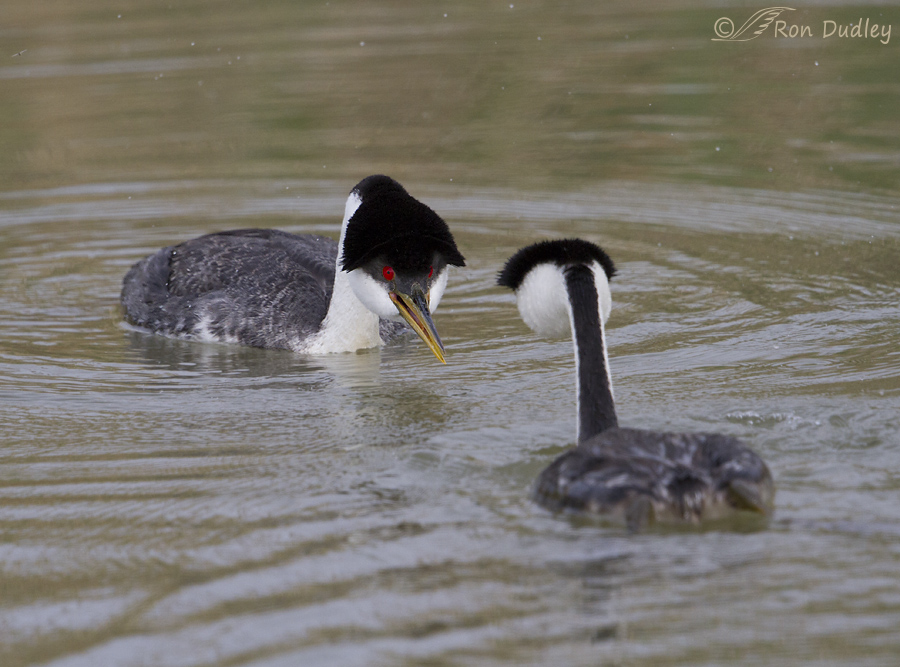
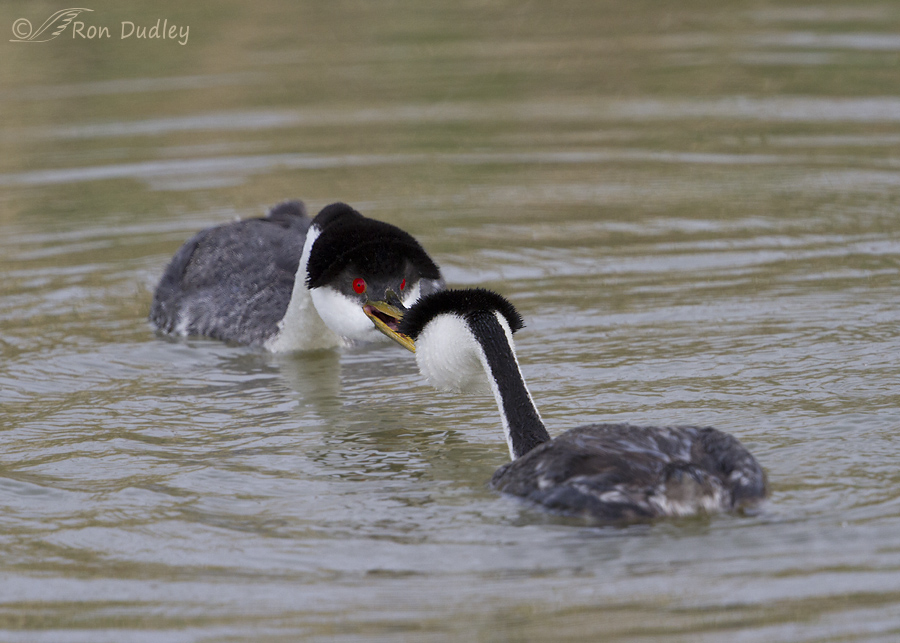
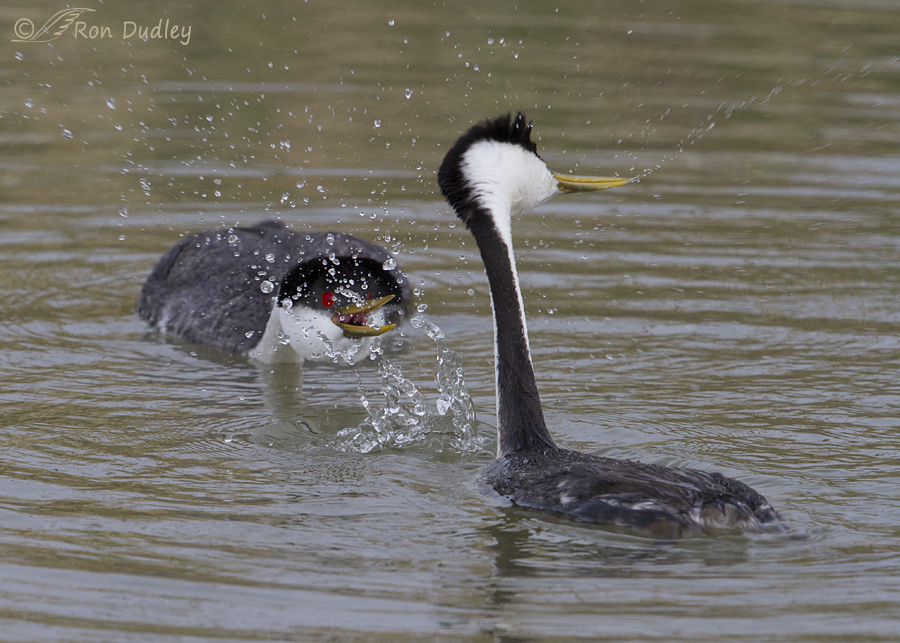
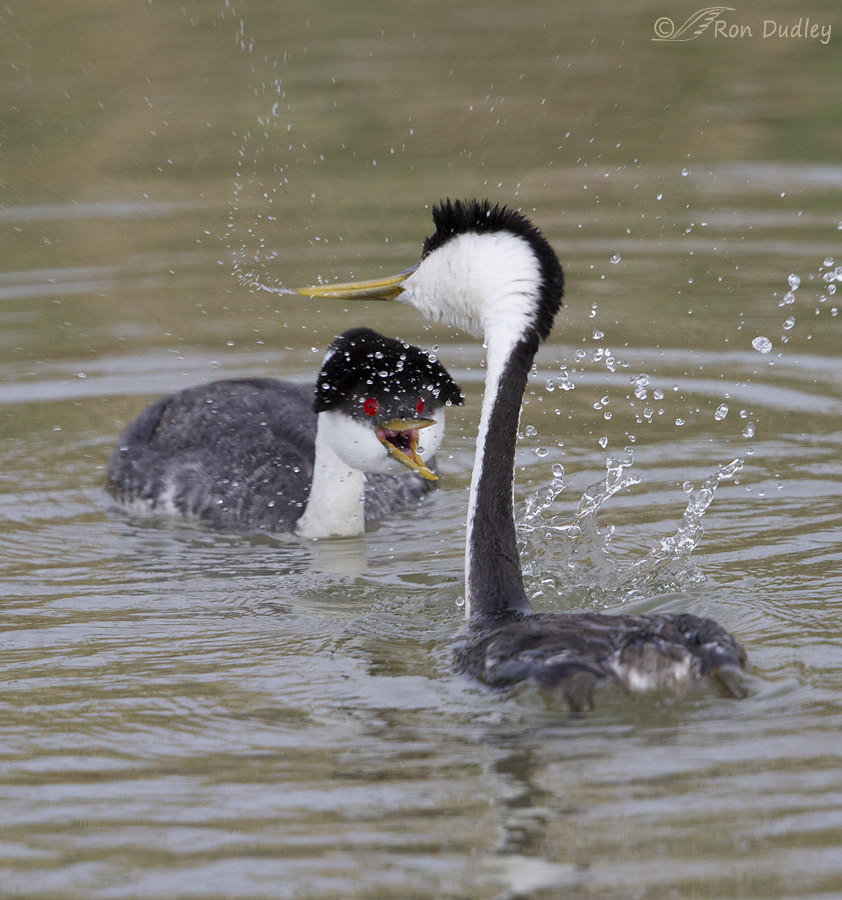
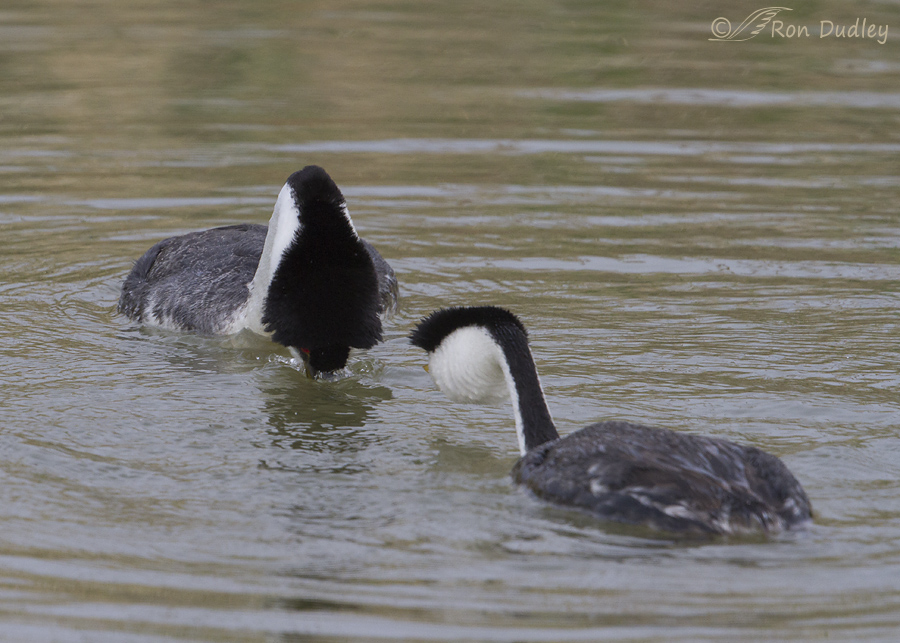
Just love the grebes and their behaviour.The swirl of water is great-no wonder they are impressed with each other!Thanks for sharing these, Ron, especially the sound effects.I just spent time with the red-necked grebes this weekend. Ah, spring is here.
We’ve got grebes galore too, Jane – of several species. Thank you.
Wow. Love the post and those calls. And the eyes and the hairdo’s. And the water.
Thank you.
Thank you, Elephant’s Child. Those eyes are pretty neat, aren’t they?
Very interesting behaviour.. Your sence of opportunity is amazing. And the inclusion of sound makes everything more alive.
I think depth of field is not important here.
Thanks for sharing.
Jorge, Some posts just need a sound clip and I thought this was one of them. Thank you.
Spectacular! Not only great photographs, but the behavioral description really provides a more in-depth “picture” of the species. Thank you, Ron!
I’m glad you enjoy the “behavioral description”, Wally. It always takes a while to get that right when I’m writing a post so I appreciate the positive feedback on it.
Fabulous set photos! The way you were able to capture the bill-dipping behavior, with the water flying everywhere makes me feel [almost] like I was there.
The bill-dipping is pretty spectacular to watch, Susan. Thanks.
Sensational series Ron! How wonderful to see this behavior. Thanks for sharing!
CHARLOTTE Charlotte
Thank you, Charlotte.
Outstanding captures, Ron … love those amazing red eyes … and the flying water droplets are perfection!! Thanks for including Cornell’s calls … I agree with Diana … they really enhance the enjoyment of your beautiful photography!!
Thanks very much, Lois.
Ron, thanks for connecting with Cornell. I played the calls as I looked at your photos and almost felt I was with you.
Diana, I use Cornell regularly – what a great resource!